Travel along the coast in Ibaraki
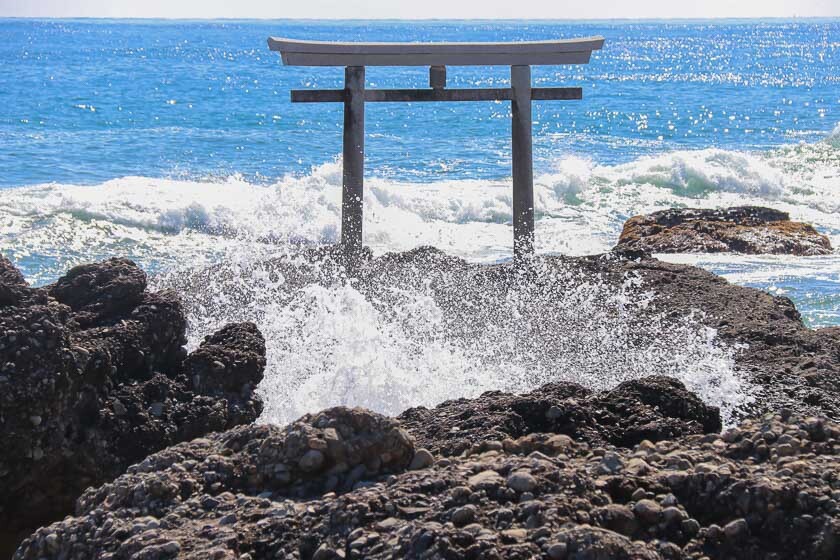
Ibaraki Prefecture is a fairly large prefecture northeast of Tokyo that borders the Pacific Ocean. Its capital is Mito, which is about 90 minutes from central Tokyo by limited express train. The prefecture is home to Kairakuen, which famous for its plum blossoms and ranked one of Japan's top three most beautiful landscape gardens alongside Kenrokuen in Kanazawa and Korakuen in Okayama, Fukuroda Falls, which is rated as one of Japan's top three waterfalls together with Kegon Falls in Nikko and Nachi Falls in the Kumano region, the Ushiku Daibutsu, Japan's tallest bronze statue of Buddha, and Lake Kasumigaura, the second largest lake in Japan after Lake Biwa in Shiga Prefecture. Additionally, the eastern side of the prefecture is lined with beaches that offer swimming and sunbathing opportunities in the summer.
Despite having so many things going for it, Ibaraki Prefecture is consistently ranked 46th or 47th (out of 47) most interesting prefecture domestically. Ibaraki locals would beg to differ this (unfair) distinction, and I set out on a day trip to find out the truth. I visited three spots along the coast of northern Ibaraki over the course of the day and had such a relaxing and fun time exploring a small part of the prefecture by public transport.
Oarai Isosaki Shrine
Starting at Mito Station, I took the local bus to Oarai Isosaki Shrine, which was established in the mid 9th century according to a Japanese historical text. The shrine was destroyed during the warring period from the 15th to 16th centuries, but was rebuilt during the early Edo Period (1603-1868). Some of the buildings like the main hall, offering hall and Zuishinmon gate date back to around 1730. According to illustrated maps from the late 19th century, the layout of the shrine has largely remained as it was with most of the major buildings in almost the same place.
The bus stopped at the base of the shrine complex where a large torii gate and a flight of stairs greeted me. It was hard not to feel dwarfed as I passed under the gate and made my way to the top of the stairs. The spacious shrine complex can be covered at a leisurely pace in about 30 minutes. The typical route many visitors follow, which I also took, starts at the top of the stairs, then continues through the Zuishinmon gate and on to the offering hall to offer prayers. Do not miss the path leading behind the offering hall to see the main hall, which has a thatched roof. From there, return and exit from the Zuishinmon Gate, and go down the same flight of stairs and towards the water.
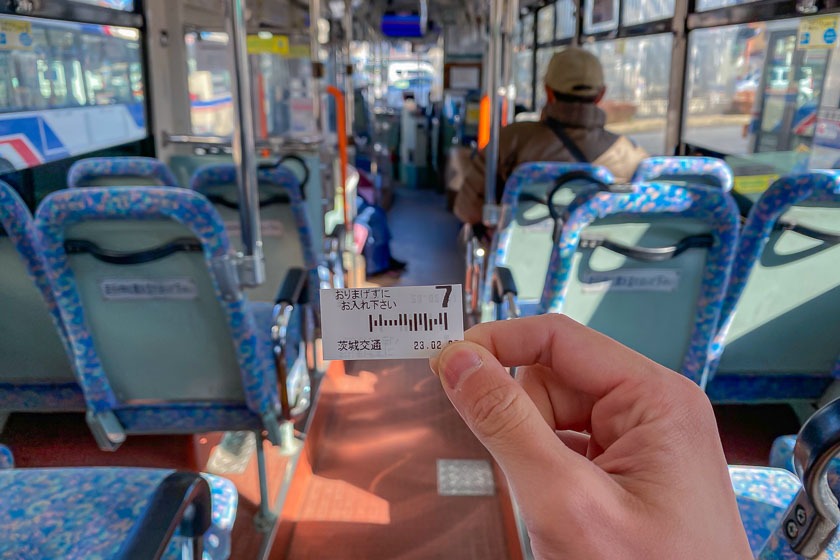
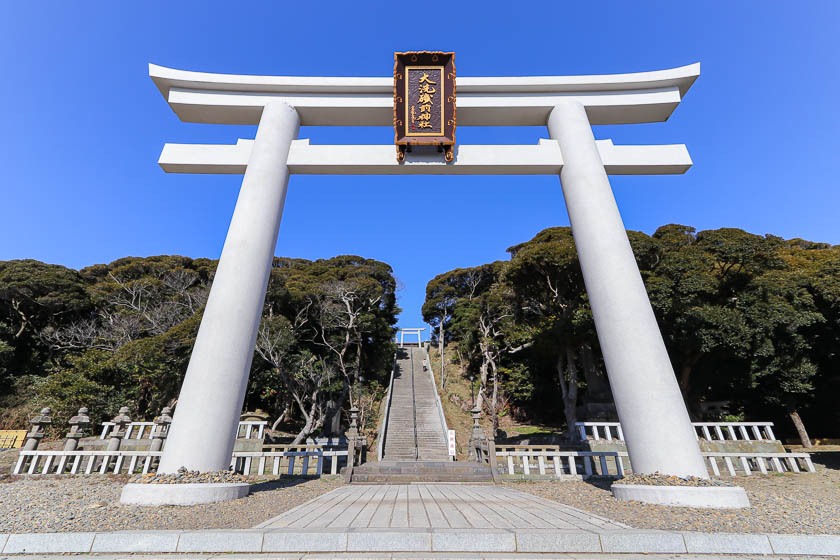
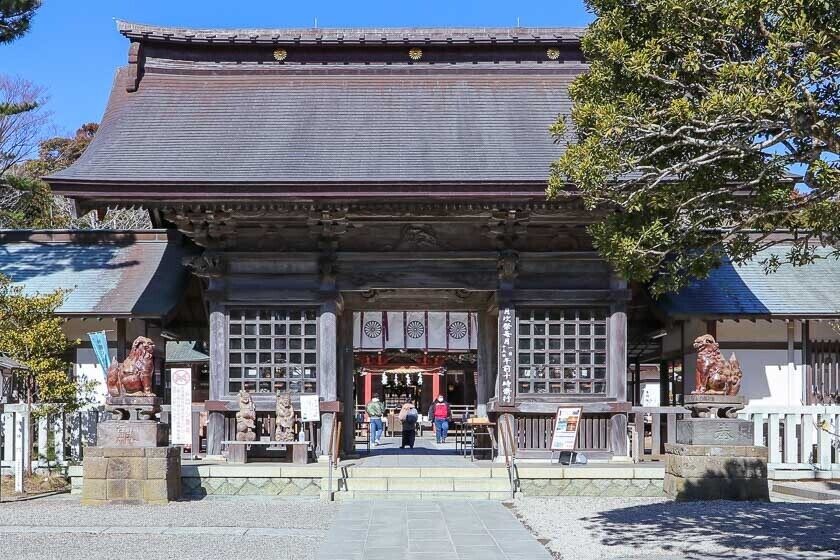
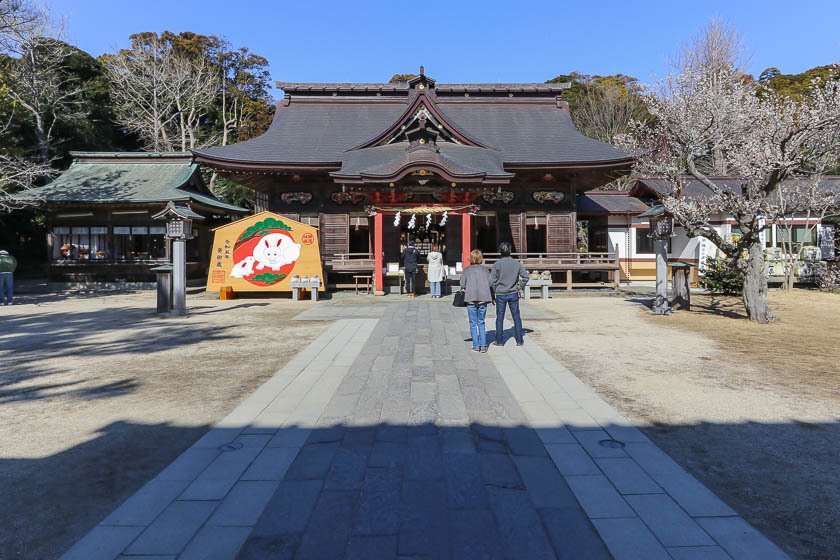
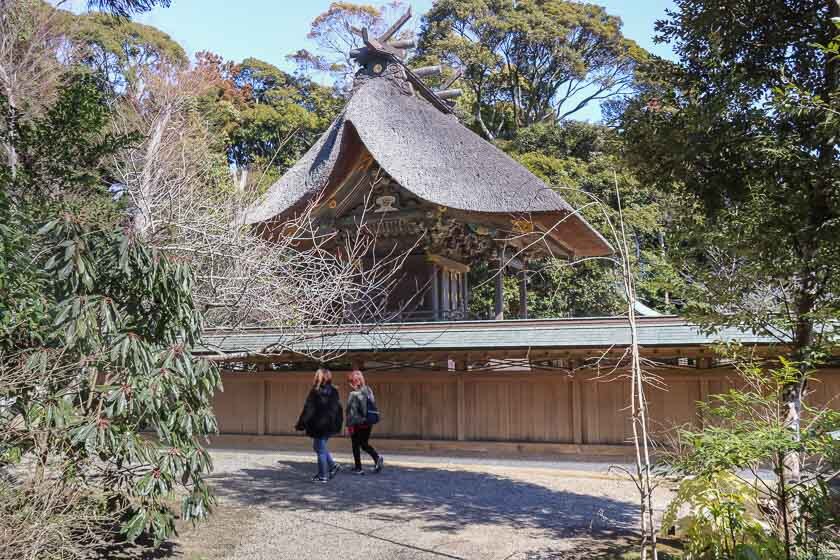
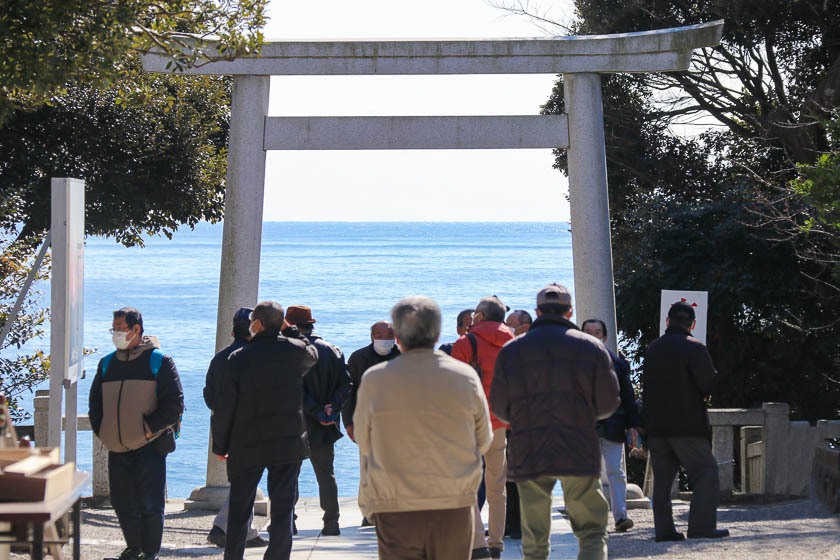
Most attractive of the torii gates of Oarai Isosaki Shrine is the Kamiiso torii gate, which stands on sacred rocks - kamiiso - in the Pacific Ocean. It is forbidden to step on the rocks that connect the shore and the torii gate as they are considered sacred ground on which the gods descended. With nothing but the vast ocean behind, the east-facing Kamiiso torii gate is a popular place to see the sunrise all year round. Around the winter solstice, the sun rises between the pillars of the gate, which can make for a nice picture and a memorable experience, while on New Year's day, a special ceremony is held at sunrise.
Interestingly, the town of Oarai is also the location setting for Girls und Panzer, an anime about tank warfare clubs in girls high schools. In the anime, tank warfare is considered a type of martial arts for girls. Fans typically visit the numerous sites in the town as seen in the anime, which includes Oarai Isosaki Shrine.
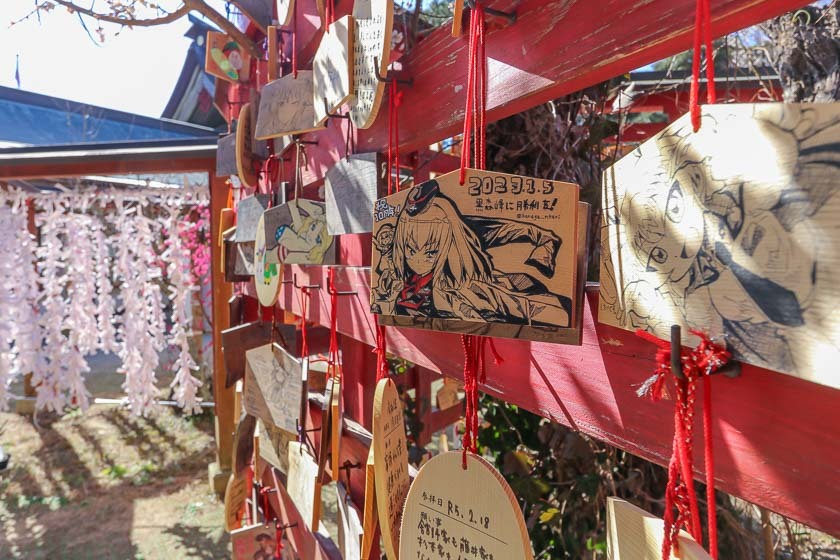
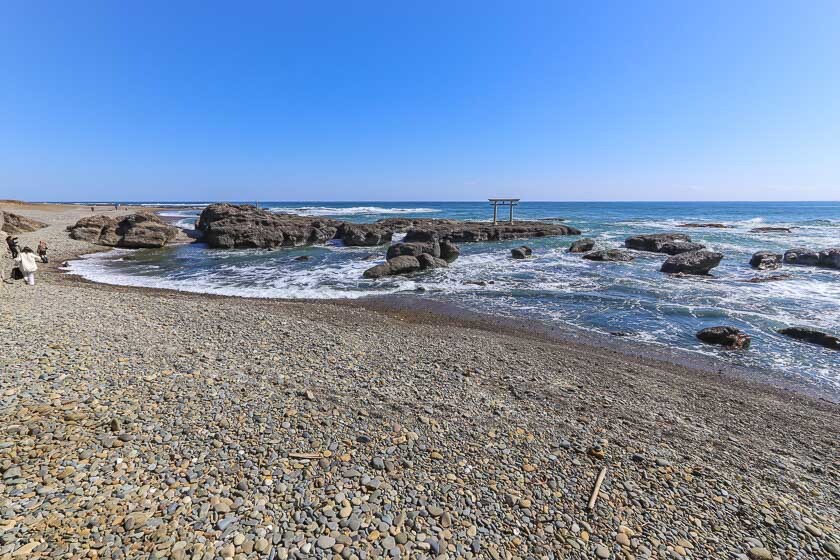
Nakaminato Fish Market
After getting my fill of the seaside shrine and its torii in the water, I went back to the same bus stop to catch the bus to Nakaminato Fish Market. The mostly coastal bus ride took about 15 minutes, which went by in a flash as I admired the scenery along the way.
The Nakaminato Fish Market is an approximately 250 meter long market selling fresh local seafood. In addition to seeing and buying fresh seafood, visitors can also also choose from the numerous seafood restaurants like conveyor belt sushi to restaurants serving set meals to street stalls, and will be spoilt for choice when it comes to dining at Nakaminato Fish Market.
Lunch was my top priority at the fish market, and I checked out the menus at the different restaurants before deciding to go to a conveyor belt sushi restaurant, which is a convenient place to try a large variety of seafood at affordable prices. The portions at the place I went were easily double the size of regular conveyor belt sushi restaurants. It was a feast for both my eyes and tummy!
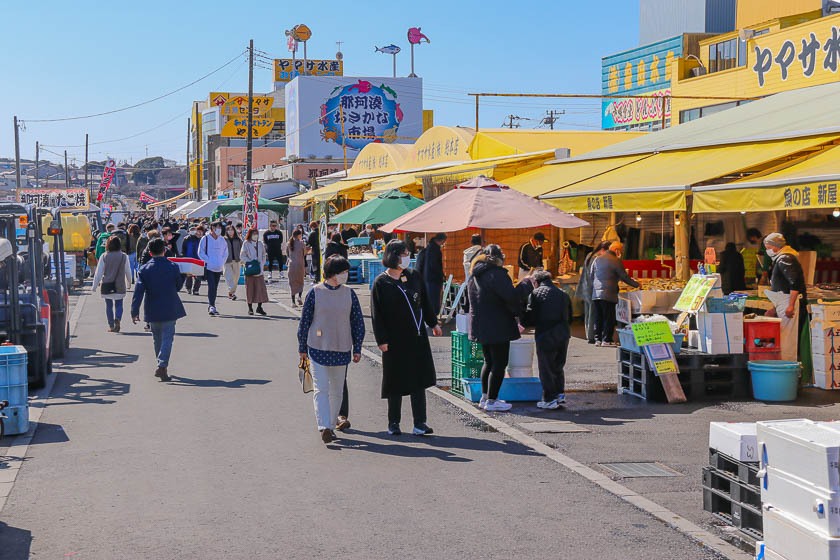
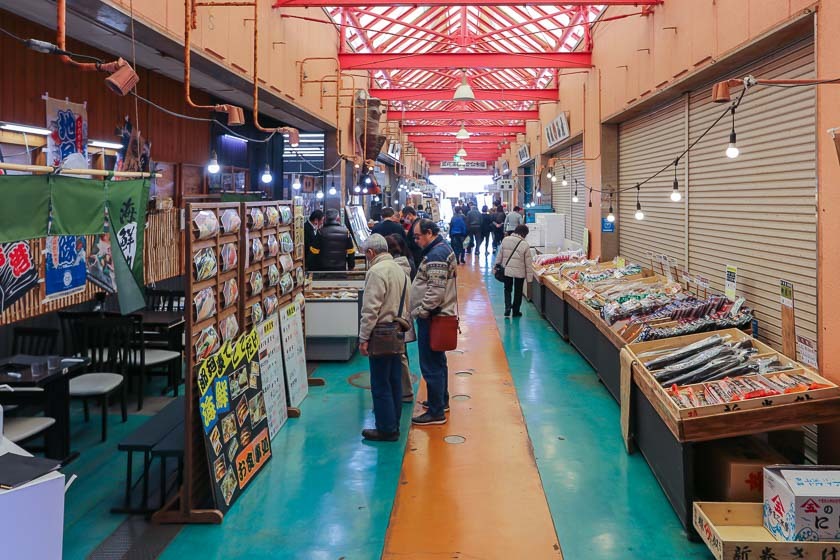

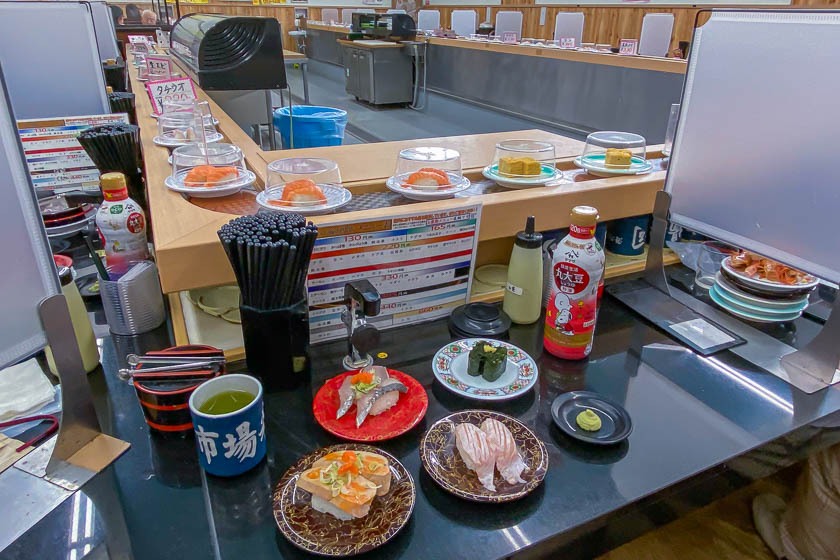
With my stomach satiated, it was safe to go for a walk without wanting to buy all the food I see. A walk through the different shops and stalls gave me an idea of what seafood was in season, and I also got to see some interesting ingredients. There were a number of people buying boxes of fresh seafood to take home, but it was something I could not do as I was traveling on foot and taking public transport. Nevertheless, I've bookmarked the fish seasonality calendar and am already planning my next visit.
From the fish market, I walked to Nakaminato Station, which took about ten minutes along the main road. Constructed in 1913, the quaint, wooden station building is one of the top 100 stations in the Kanto Region and has been featured in commercials, movies and TV dramas. IC cards cannot be used on the Hitachinaka Kaihin Railway, so I bought a ticket, which added to the retro feel of taking the cute local line.
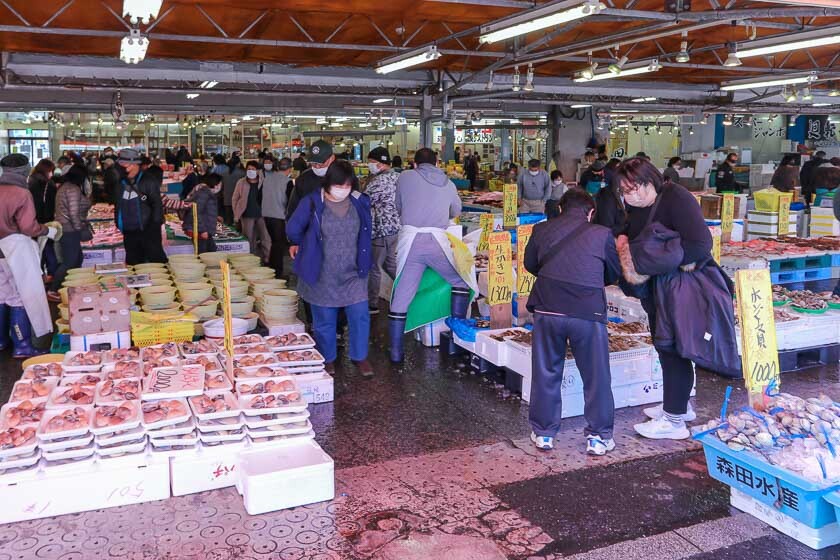
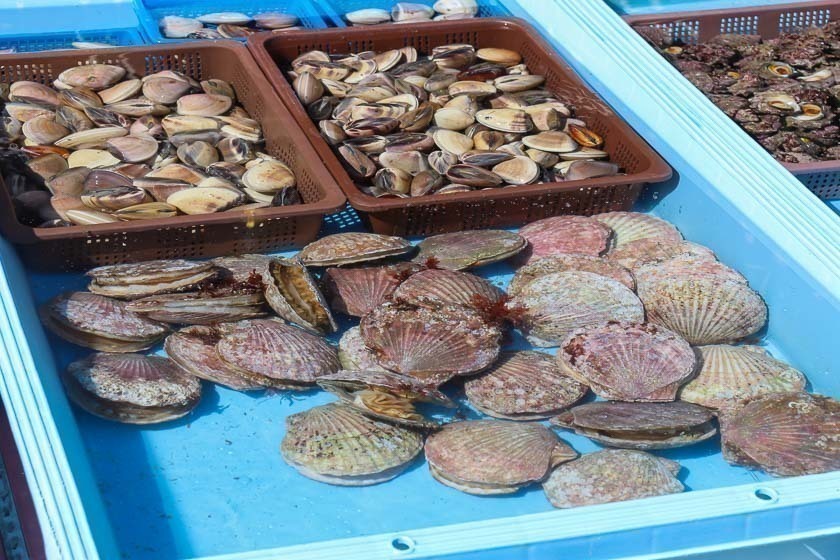
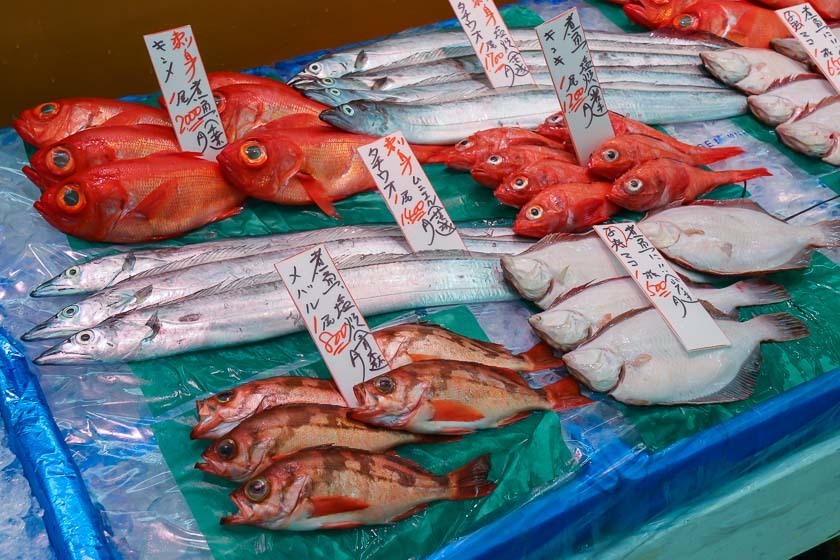
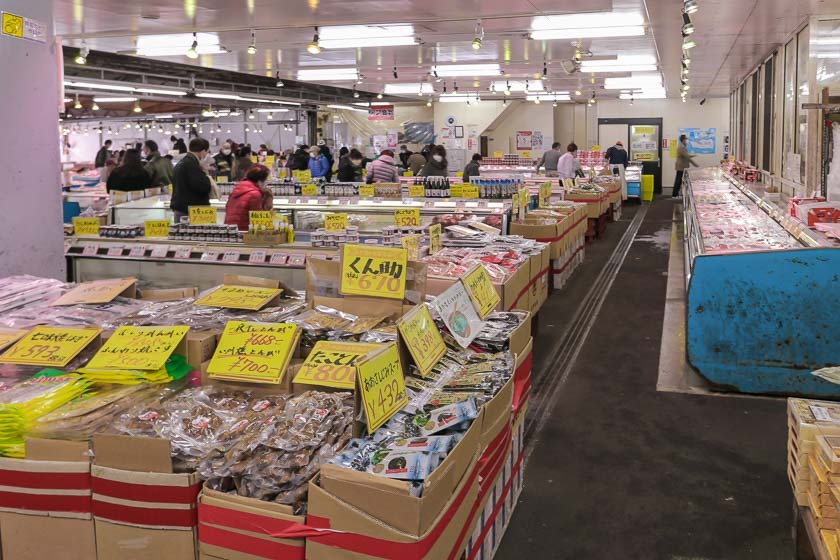
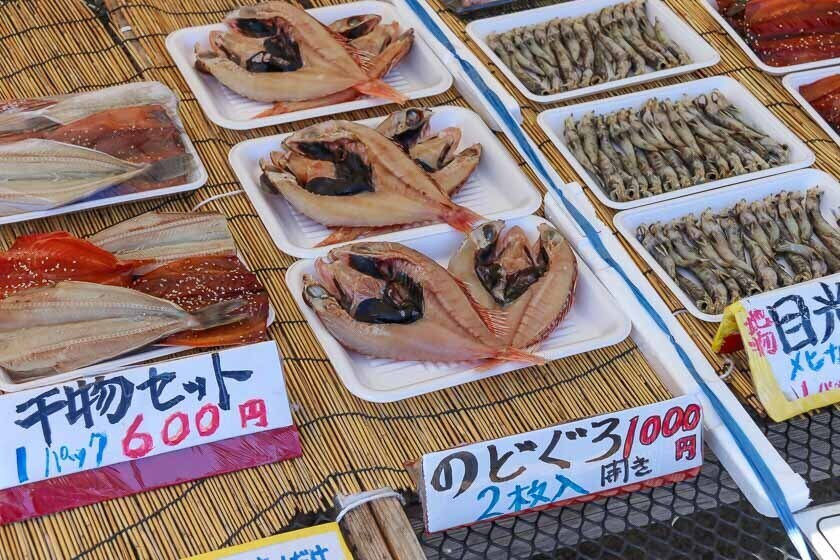
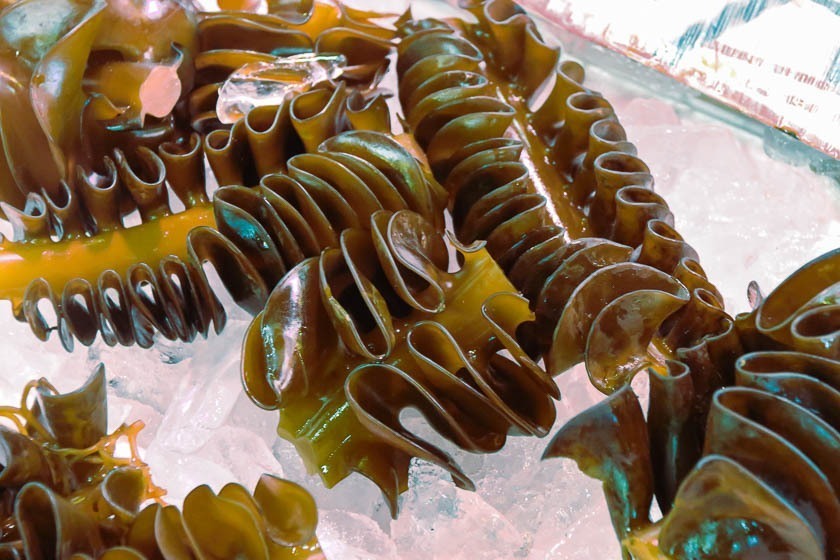
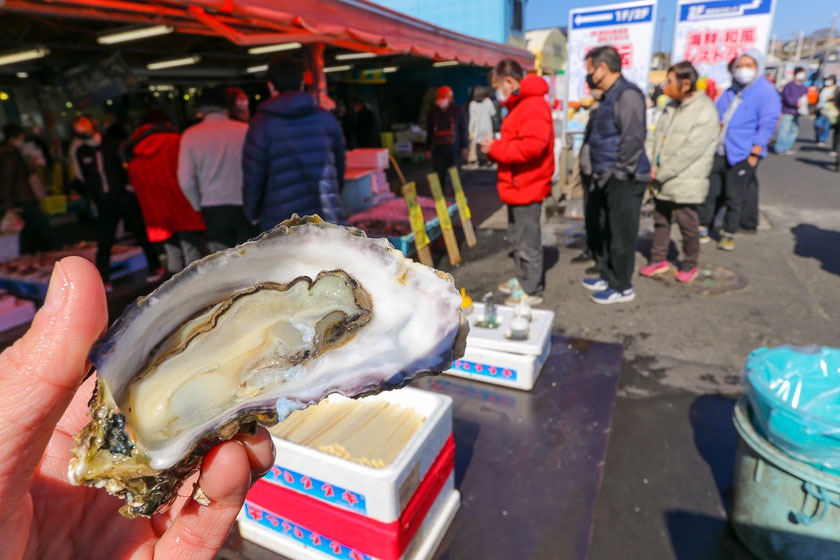
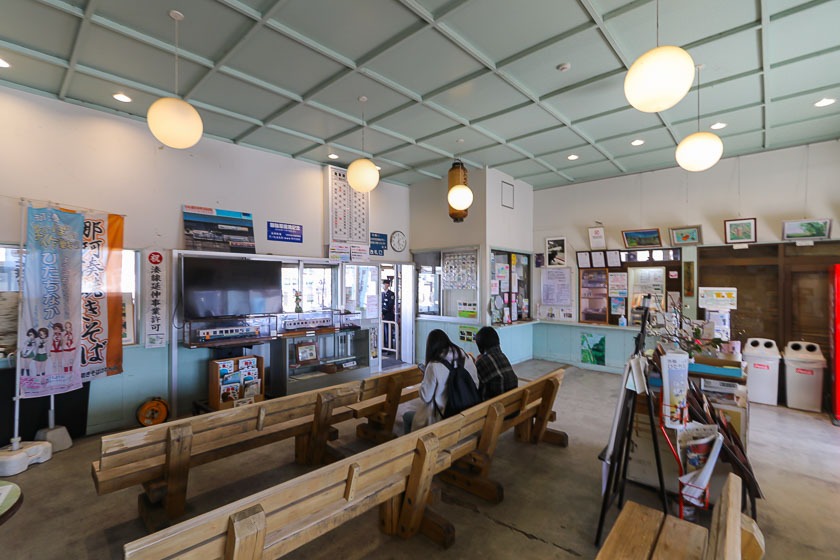
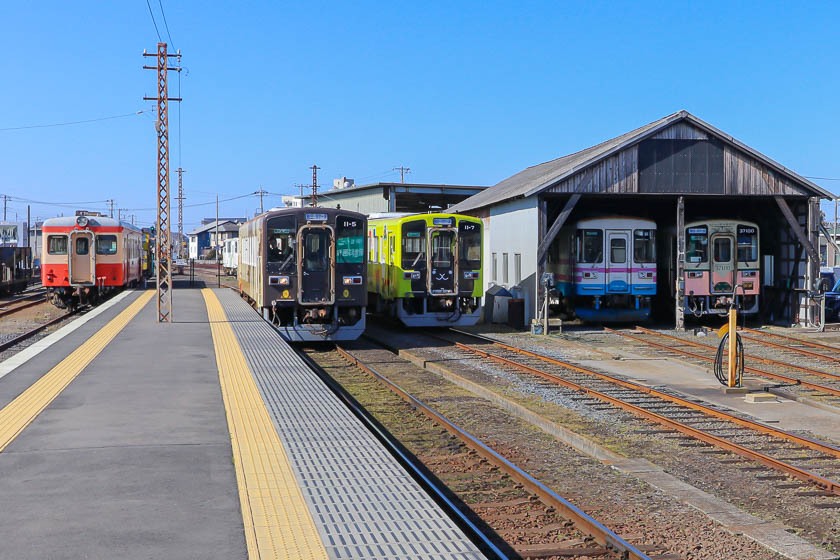
Hitachi Seaside Park
The train ride from Nakaminato to the Ajigaura terminal took a mere ten minutes, and I handed my ticket to the train driver as I got off. I knew I wanted to swing by the nearby Ajigaura Beach, so I headed off in the direction of the sea.
Unlike the stony beach at Oarai Isosaki Shrine, Ajigaura Beach had nice soft sand. It was a little too chilly for swimming in the sea when I visited, but it looked like a nice beach to visit in the summer. I could already imagine myself buying some seafood from Nakaminato Fish Market then heading to Ajigaura Beach to have a seafood barbecue :P That would be my perfect summer day out.
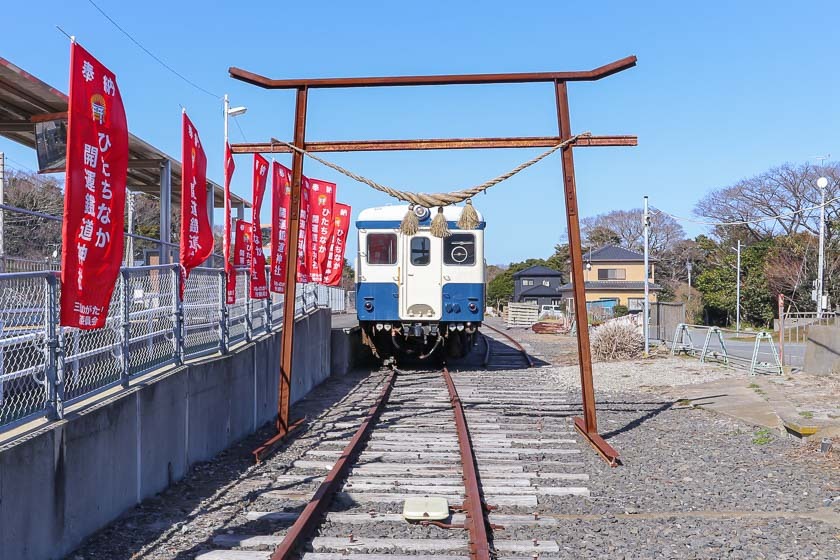
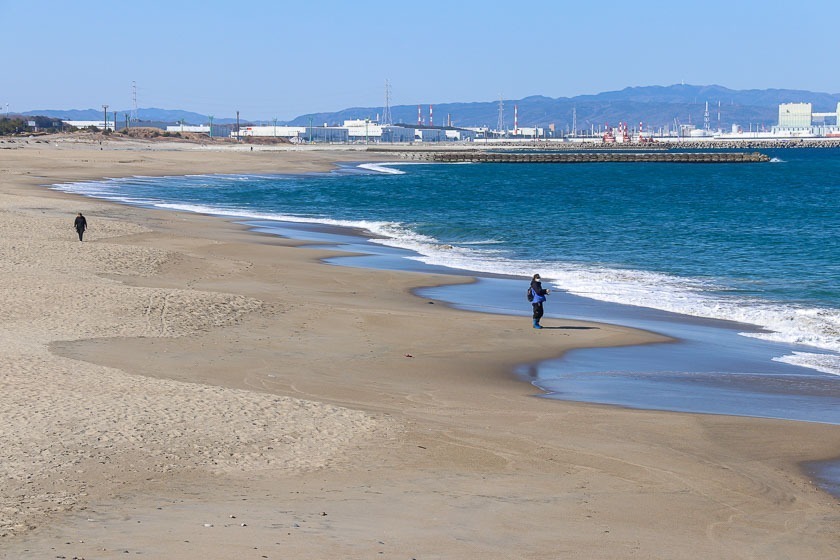
It was an approximately 20 minute walk along the coast to the south entrance of the Hitachi Seaside Park, my last stop for the day. The spacious park is known for its seasonal flowers, especially the approximately five million blue nemophila flowers that bloom from mid April to early May. I was a little too early to see the blue flowers, but instead, got to see plum blossoms, narcissus and rape blossoms.
Rental bicycles are available in the park, and I initially considered getting one to move around the large park, but ultimately decided to walk around instead. I thought walking was the better option as bicycles were allowed only on the dedicated bicycle lanes, which meant I would have to return to my parked bicycle each time I went to see something. A bonus of visiting the park outside of its popular seasons - mid April to early May and late August through October - is the lack of crowds and having lots of space. I crisscrossed my way around and enjoyed the late afternoon sun, all the while listening to the wind rustling through the trees and the sounds of gardeners at work.
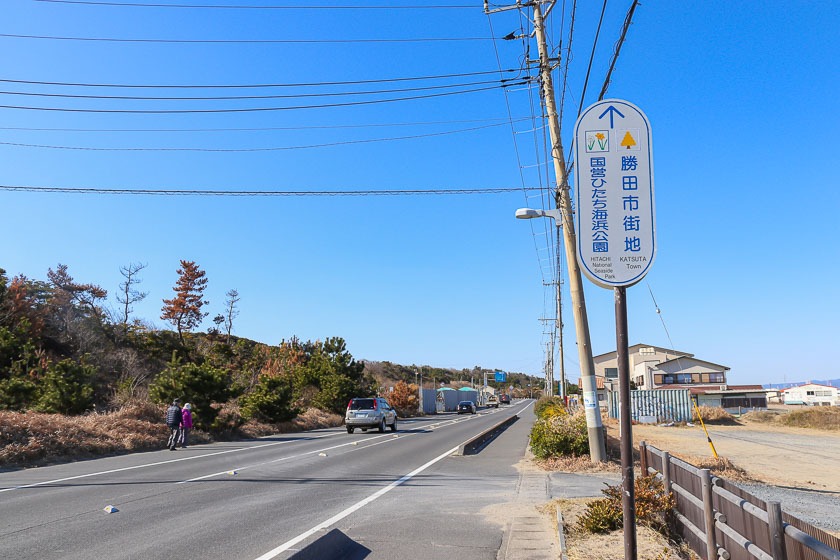
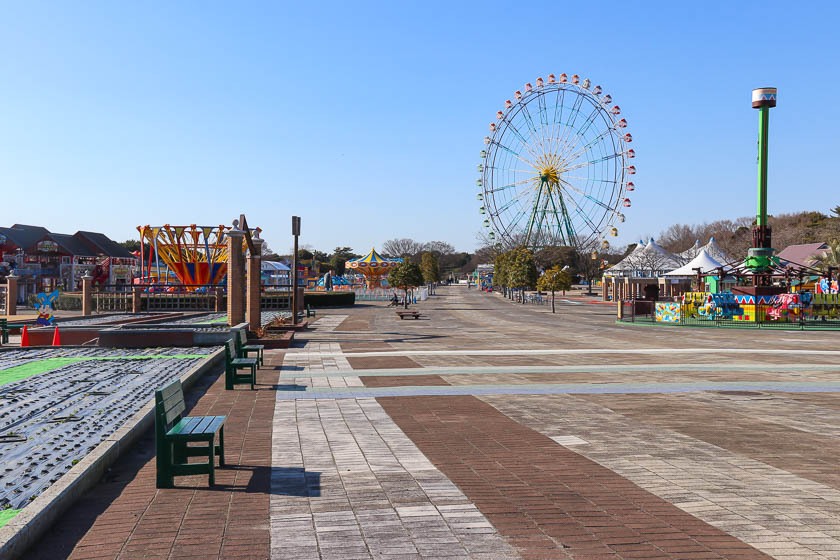
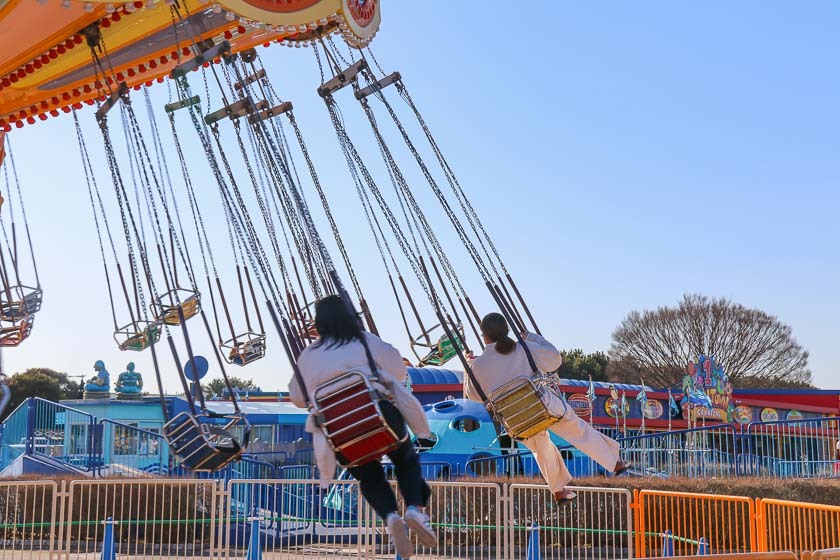
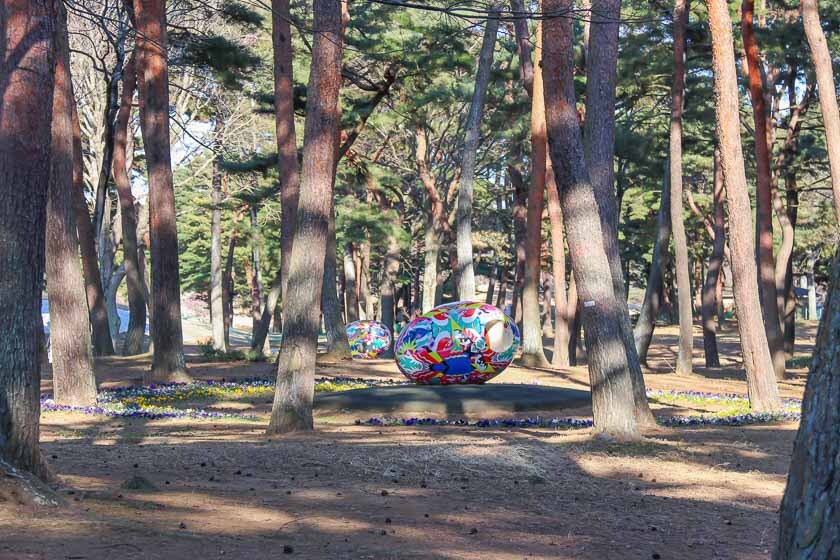
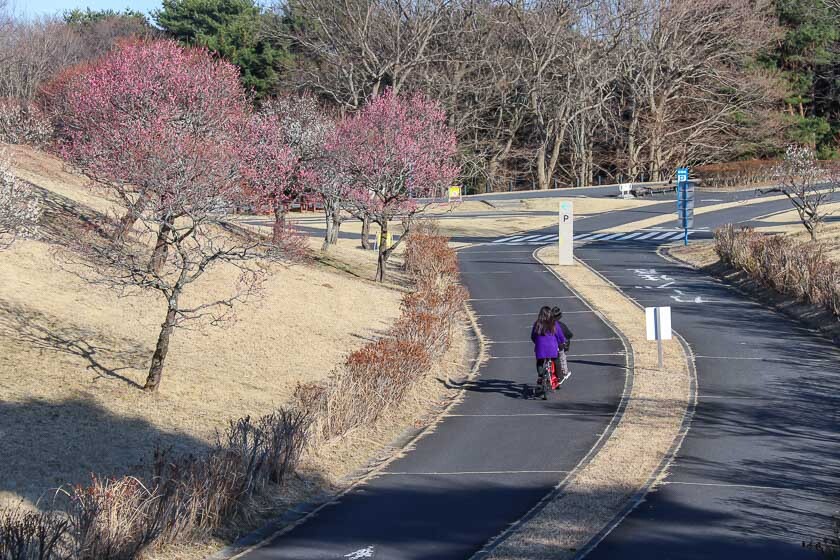
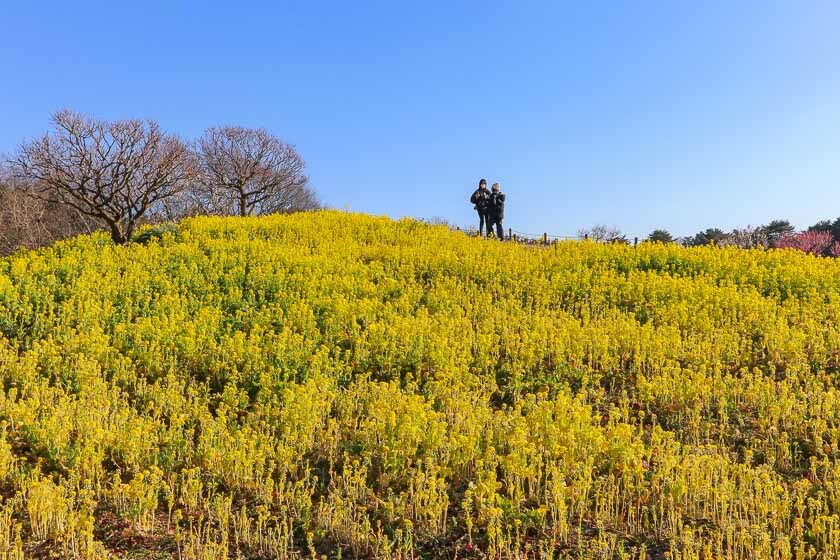
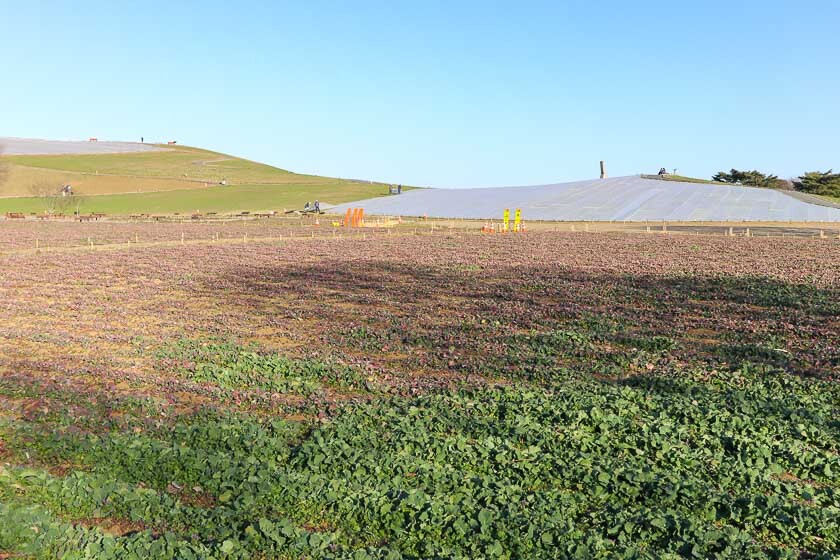
I stayed at the park till it was closing time and exited from the west gate, from where I took the bus directly to Katsuta Station and then straight back to central Tokyo.
This easy and relaxing day out in Ibaraki Prefecture did not give me the impression that it would rank that low on the interest level. I found the places I visited to be attractive and easy enough for me to navigate without being overwhelmed by confusing directions. Overall, I thought this was a simple and doable day out from Tokyo, one that does not require getting up at unearthly hours or returning late at night, and the more ambitious can have the option of staying overnight in Mito to explore the city the day before or after.
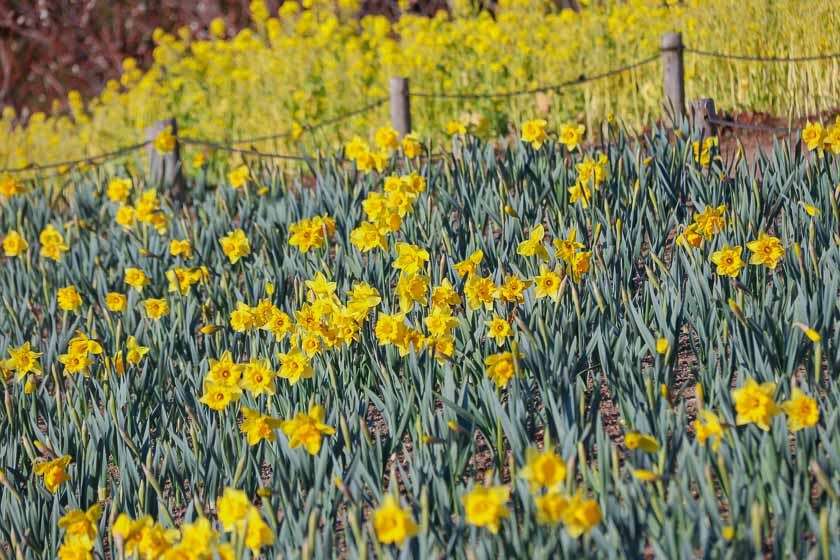
Getting there and around
Central Tokyo to Oarai Isosaki Shrine
Take the Hitachi or Tokiwa limited express train from Shinagawa, Tokyo or Ueno station in central Tokyo and get off at Mito Station (3890 yen, 90 minutes one way, 2 trains/hour). All seats are reserved on the Hitachi and Tokiwa limited express trains. The one way journey is fully covered by the Japan Rail Pass, the Tokyo Wide Pass and a few other regional JR passes).
From Mito Station, go to the bus terminal at the north exit and take bus number 50 bound for Nakaminato Station (660 yen, 35 minutes one way, hourly departures) from stand number 3. Get off at Oarai Jinja-mae (大洗神社前). The entrance to the shrine is beside the bus stop.
Alternatively, from Mito Station, transfer to the Kashima Rinkai Railway and get off at Oarai Station (330 yen, 15 minutes one way, 2-3 trains/hour). Take the Kaiyu loop bus from Oarai Station and get off at Oarai Isosaki Jinja Shita (大洗磯前神社下, 100 yen, 15 minutes one way, 1 bus/hour). The entrance to the shrine is beside the bus stop.
Oarai Isosaki Shrine to Nakaminato Fish Market
From the same bus stop beside the entrance to the shrine, take bus number 50 (280 yen, 15 minutes one way, hourly departures) bound for Nakaminato Station and get off at Honcho Minami (本町南). The fish market is a five minute walk from the bus stop.
Nakaminato Fish Market to Hitachi Seaside Park
From the fish market, walk about ten minutes northwest to Nakaminato Station. Then, take the Hitachi Kaihin Railway to Ajigaura Station (260 yen, 10 minutes one way, 1-2 trains/hour). The south entrance of the Hitachi Seaside Park is about a 20 minute walk from the station via Ajigaura Beach.
Hitachi Seaside Park to central Tokyo
Exit the park from the west entrance and take the bus bound for Katsuta Station (400 yen, 20 minutes one way, 1-3 buses/hour). Take the Hitachi or Tokiwa limited express train from Katsuta Station back to central Tokyo (3890 yen, 90 minutes one way, 2 trains/hour).





